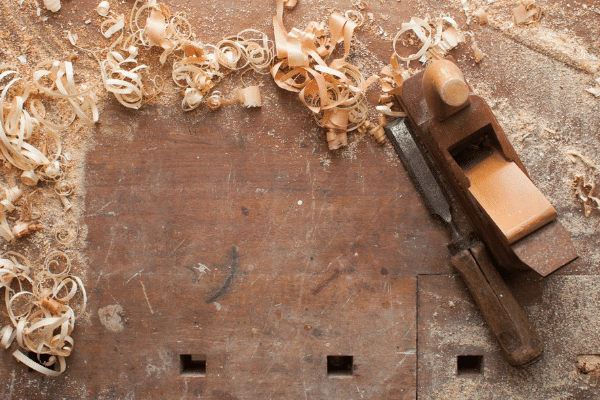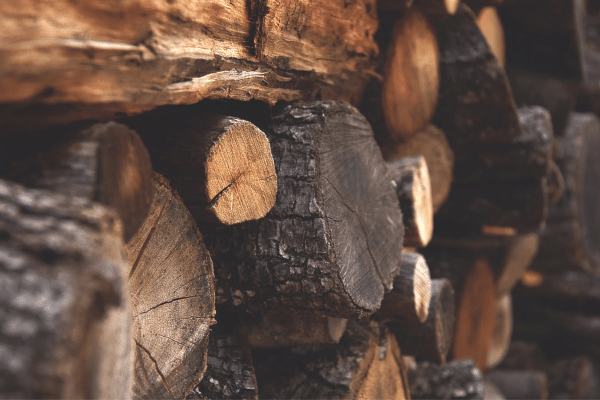- Home
- Types Of Firewood
- Plywood in a Fire Pit
Burning Plywood In A Fire Pit
This post may contain affiliate links so I earn a commission.
DIY-ers, woodworkers, and shopkeepers may not like this, but burning plywood in a firepit is not okay.
Plywood, particleboard, and chipboard are all types of manufactured wood.
Manufactured wood has added chemicals and materials beyond that of natural firewood.
While it may burn fast, all your doing is giving yourself and your neighbors a mix of toxic fumes when you burn plywood in a firepit.
What Is Treated Wood And Plywood
Pressure treated wood is chemically preserved lumber designed to withstand rot.
You can find treated wood everywhere, from outdoor garden hardscaping to a beautiful wrap around deck, pressure treated wood is an affordable option for building.

Newly pressure treated wood may have a
green tint to it, but this fades over time, so don’t rely on it for identification.
Plywood, which is in the family of pressure treated wood, is manufactured wood made from thin layers of wood veneer.
Glue holds each layer together using resin and wood fiber sheets.
Plywood is used for floors, fencing, panels, furniture, sports equipment, and playground equipment, just to name a few!
There is such a thing as untreated plywood, but burning it will still release the fumes of the same glue.
So, burning untreated plywood in a fire pit is also dangerous and not recommended.
Chemicals Found In Plywood
Conventional plywood uses formaldehyde resins to keep the thin veneers of wood together.
Indoor plywood uses urea-formaldehyde (UF) glue, while outdoor plywood uses phenol-formaldehyde (PF) resin.
You may also find melamine glue on plywood.
Melamine glue is a hard, plastic material used to increase the resistance to weathering.
Formaldehyde can cause watery eyes, burning eyes and throat, nausea, and difficulty breathing.
High concentrations of formaldehyde can cause an attack for someone with asthma.

It has also been studied and linked to possibly causing cancer in humans.
Older treated wood may even contain arsenic.
A single tablespoon of ash from pressure treated wood containing arsenic is lethal.
Arsenic has no taste or smell; this is not something you want around your family.
If you're considering burning plywood in a fireplace or wood stove you should think again, the chemicals in plywood may erode the interior of your chimney leading to structural damage over time.
What Is Plywood Typically Used For?
While plywood’s most common use is for furniture, plywood has utility for more than building supplies.
A common way for plywood to be used is for storing or stacking parts, supplies, and materials for companies.
For example, companies will use plywood for delivering large items such as engines and truck machinery.
Burning plywood that had industrial use releases formaldehyde and toxins like car oil, gasoline, and lubricant.
Likewise, many companies use plywood as a temporary work surface.

For example, sign makers will cut, sand,
and paint signs on a temporary plywood surface.
In turn, burning this surface, later on, would be burning all of the projects done on it previously.
If you are receiving plywood from a company or friend for free, consider where it came from first before deciding its future.
Burning Plywood In A Fire Pit - Health And Environmental Effects
The side effects of inhaling formaldehyde from burning plywood in a fire pit may include fatigue, repertory irritation, impaired lung function, and skin reactions.
Along with these, someone may experience a burning sensation in the eyes, nose, and throat while burning plywood containing formaldehyde.
Some research studies have linked people who work with formaldehyde and plywood to several cancers, including nasopharyngeal cancer and leukemia.

Burning plywood, trash, and other
pollutants is also an emissions problem.
Mercury, carbon monoxide, greenhouse gases, volatile organic compounds, and nitrogen oxides are pollutants released from burning plywood and trash.
Legality Of Burning Plywood In A Fire Pit
Because of the health and environmental risks of burning, plywood and treated lumber are illegal to burn in all 50 states.
Whether open burning, in a fireplace, wood stove, or barrel, burning building supplies is illegal.
This includes burning plywood in a fire pit.
What Else Should I Avoid Burning?
On the same lines of dangerous things to burn, here is a quick list of other things to avoid burning:
Wooden Pallets
- While they may burn great, wooden pallets are treated with a chemical called methyl bromide, making wooden pallets a poor option to burn.

Painted Wood
- Painted wood may give off toxic fumes.
- In particular, if you are burning old wood, you may be burning lead paint, which is not something you want to breathe in.
Cardboard
- Cardboard ink, when burned, will release chemicals into the air that you should avoid.
Poison Ivy, Oak, or Sumac
- Burning poisonous plants like poison ivy, oak, or sumac can cause lung irritation and severe allergic reaction.
- Burning these plants may even land you in the hospital.
- Do not burn weeds if poison ivy, oak, or sumac may be in the pile.
- Likewise, double-check that poison ivy has not grown onto your woodpile before burning.
Plastic/Trash
- Plastic and trash release chemicals such as dioxins, furans, and styrene gas into the air when burned.
Magazines And Junk Mail
- Shiny paper materials such as magazines, wrapping paper, and junk mail release toxic fumes from their ink when burned.
Safe Alternatives To Burning Plywood In A Fire Pit
We’ve all heard the saying before, but reduce, reuse and recycle.
If you have plywood laying around that you would like to burn, consider the alternatives.
Take a peek around your property - do you have a shed that needs a new floor or patches?
Can you create a fun building project like a treehouse for the family to do?

If you want something smaller, create a shelf, a tool organizer, or a plant stand.
There are endless ideas for reusing plywood since it's such a versatile wood.
Consider recycling if a project is not on
your radar and you wish to get rid of your plywood.
You can recycle by leaving plywood out to be collected by your local waste management, just remember only to put out plywood when they are collecting Class B wood.
You can also recycle by donating your plywood to Habitat for Humanity or a local thrift store.
Burning Plywood In A Fire Pit - Overall
Pressure treated wood creates toxic fumes when burned, making it dangerous to be around and inhale.
Remember, the safest thing to burn in your firepit is wood specifically cut, dried, and stacked for burning.
It is so tempting to chuck your extra plywood into your roaring fire and just get rid of it, but avoid this!
Plywood in a firepit is something to avoid, clearly at all costs.


